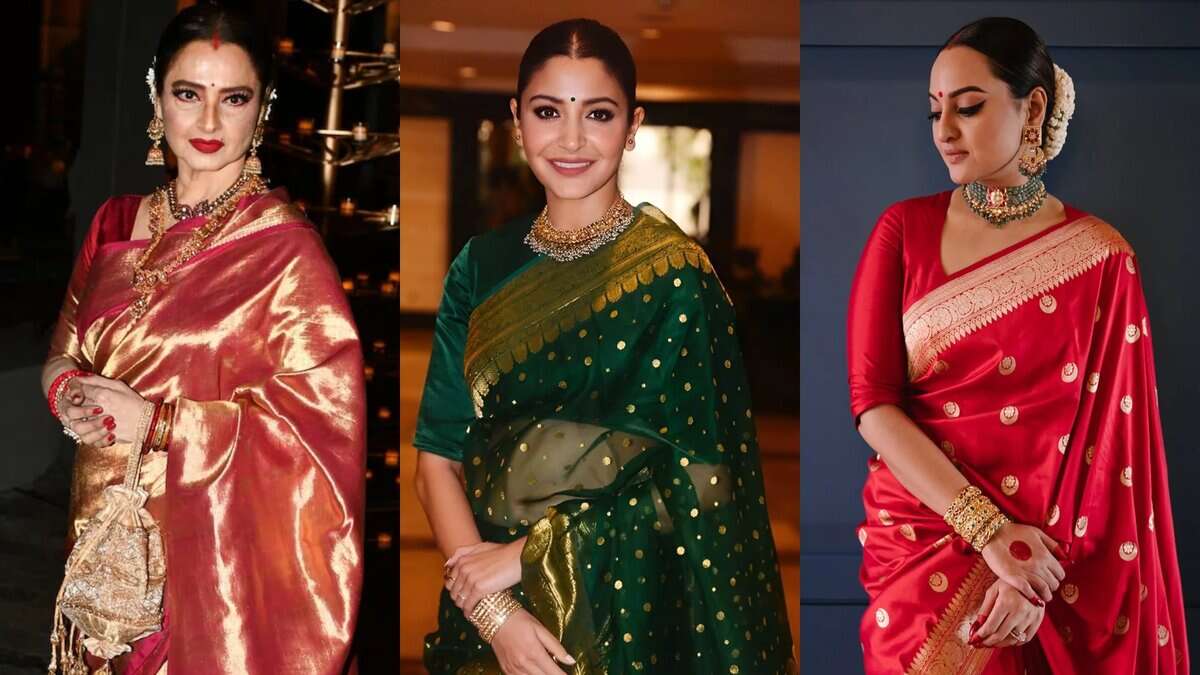
India’s saree tradition is a celebration of artistry woven into silk and cotton. Among the many handloom treasures, three stand tall Banarasi, Kanjivaram, and Chanderi. Each has its own identity, shaped by history, geography, and craft. To the untrained eye they may look similar, but their stories are worlds apart. Siasat.com brings you these three amazing weaves and their speciality.
Banarasi – Regal Grandeur from the North
The Banarasi saree originates from Varanasi in Uttar Pradesh. Rooted in the Mughal era, it reflects a fusion of Persian and Indian designs.
Fabric: Fine silk, woven with gold and silver brocade, heavy and lustrous.
Motifs: Florals, creepers, and the iconic jhallar edging.
Occasion: Its dense weave and rich texture make it a favorite for weddings and bridal trousseau.
Authenticity: True Banarasis carry a GI (Geographical Indication) tag and show delicate thread floats on the reverse side.
Kanjivaram – The Jewel of the South
The Kanjivaram saree, also called Kanchipuram silk, comes from Tamil Nadu. Known as the “queen of silks,” it blends temple tradition with grandeur.
Fabric: Pure mulberry silk, thick, glossy, and extremely durable. The border and body are woven separately and joined so seamlessly that they never come apart.
Motifs: Temple towers, peacocks, elephants, and mythological figures in real gold zari.
Occasion: Bold colors and weight make it ideal for festivals, temple ceremonies, and South Indian weddings.
Authenticity: Genuine pieces carry a Silk Mark. Look for a red thread under the zari and the “ring test” pure silk glides smoothly through a ring.
Chanderi – Sheer Poetry in Weave
From Madhya Pradesh, the Chanderi saree is prized for its lightness and elegance. Unlike the opulent Banarasi or the majestic Kanjivaram, it is simple yet graceful.
Fabric: Silk, cotton, or blends sheer, airy, and feather-light.
Motifs: Tiny butis, coins, peacocks, and geometric designs, often highlighted with fine zari.
Occasion: Perfect for summers, day events, or anyone who prefers easy draping.
Authenticity: True Chanderis are translucent, crisp, and have delicate handwoven motifs.
Threads of Heritage
Each of these sarees is more than a garment; they are living stories of India’s heritage. The Banarasi dazzles with northern grandeur, the Kanjivaram commands southern majesty, and the Chanderi whispers elegance from central India.
In a world filled with fast fashion, these weaves stand apart, reminding us of patience, craftsmanship, and timeless tradition. To drape one is not just to wear a saree it is to carry centuries of culture and art, woven into every thread.



